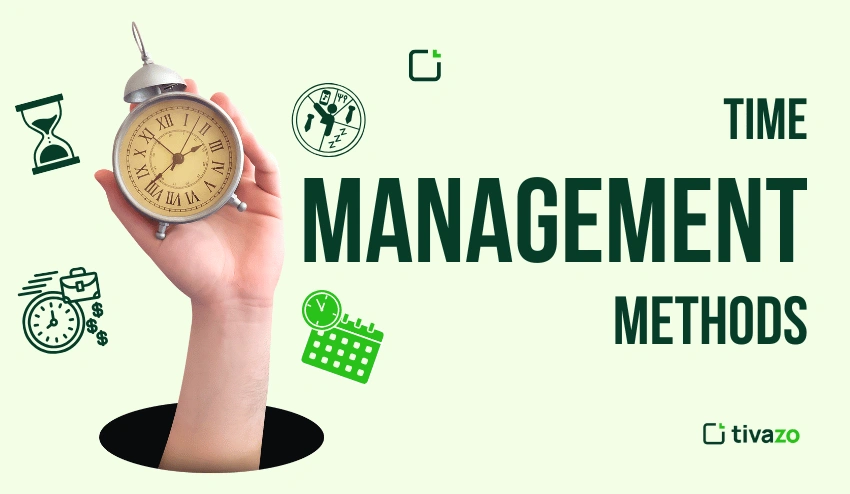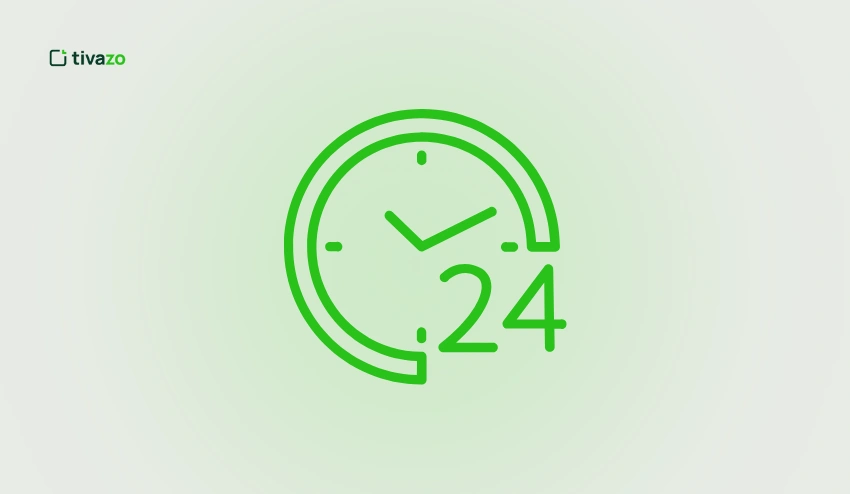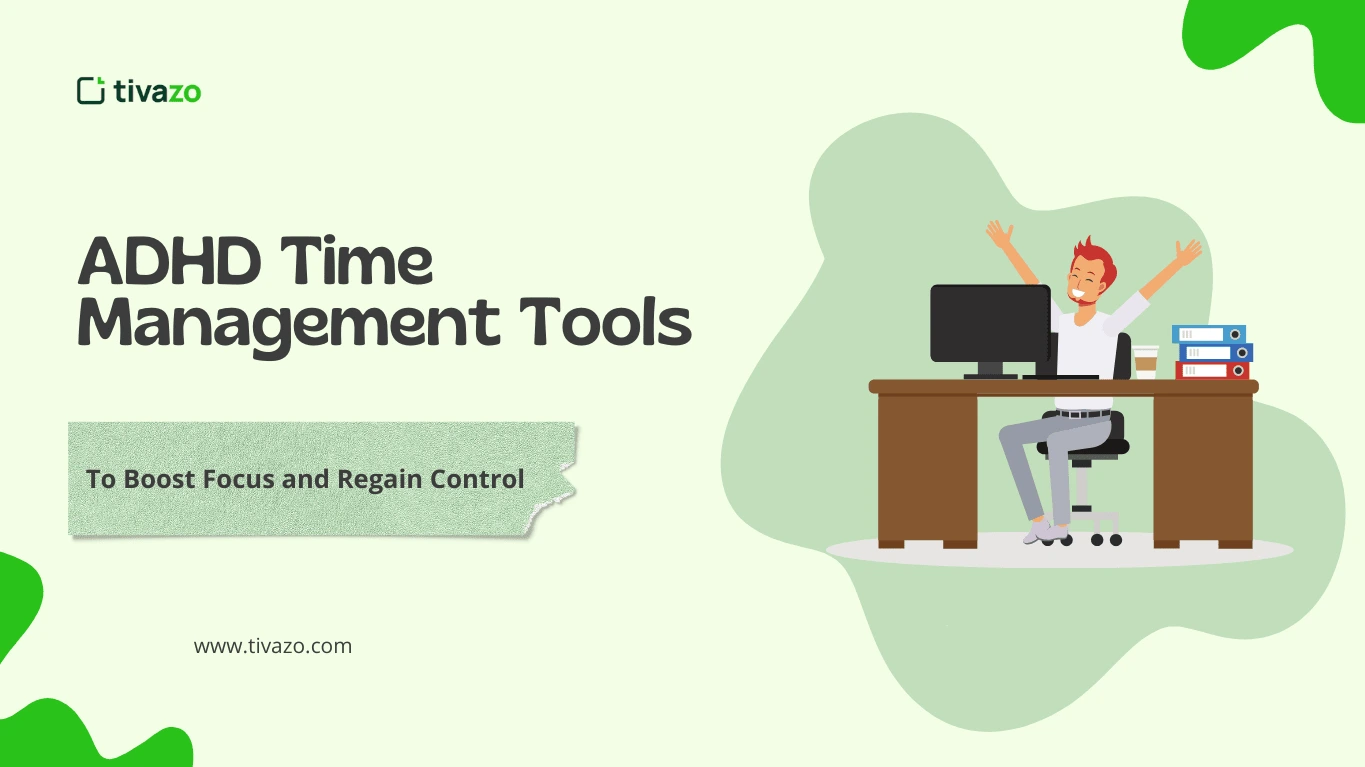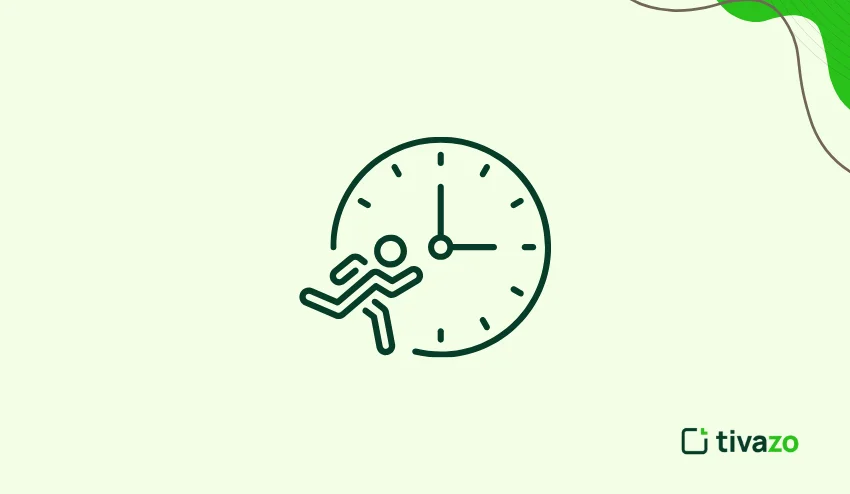Do you regularly feel that you do not have enough time in the day? With a slew of things to do, deadlines to meet, and personal obligations, it is not hard to lose track of what is important.
The trick to taking back control of your day is learning how to manage your time. Proven time management methods such as the Pomodoro Technique, time blocking, and the Eisenhower Matrix will help you to prioritize high-impact tasks, minimize distractions, and increase productivity on a daily basis. Based on studies, people who use systematic productivity techniques accomplish tasks up to 25 percent faster and also have reduced levels of stress.
This article will examine some practical time management methods to enable students, employees, and professionals to work smart rather than hard. You will learn about the most effective task scheduling tips as well as tools to track and optimize your workflow and find the most effective way to achieve more daily, while maintaining a healthy work-life balance.
What is Time Management?
Time management is the process of planning and organizing how to divide your time between specific tasks effectively. It helps individuals prioritize important activities, reduce stress, increase productivity, and achieve both personal and professional goals. By mastering time management, you can work smarter, meet deadlines consistently, and make more time for what truly matters.
What Are Time Management Methods?
Time management methods are strategies and techniques that individuals use to plan and control how they spend their time. These methods aim to increase efficiency, prioritize tasks, and minimize distractions, ultimately leading to improved productivity and goal achievement.
Implementation of good time management methods may make a real difference in personal and professional life. Such methods as the Pomodoro Technique, time blocking, or the Eisenhower Matrix will help people prioritize their tasks, minimize time wasting, and stay on track with their objectives.
What is ABC method of time management?
ABC technique of time management is an excellent time management methods that is aimed at assisting individuals in prioritizing their tasks depending on their urgency and significance. This method helps professionals, students, and any other individual who wants to be more productive to concentrate on the important things by dividing the tasks into three categories: A, B, and C.
- A Tasks (High Priority): These are urgent tasks that are to be done at once. These tasks can have severe consequences in case of their missing or delay. As an example, deadlines, urgent client requests, or a project report.
- B Tasks (Medium Priority): These are not urgent but important jobs. The completion of these should follow the A tasks. B tasks usually involve preparation, scheduling, and planning tasks that facilitate general productivity.
- C Tasks (Low Priority): These are small tasks that are not urgent and not very important. This can be checking normal emails, arranging files, or other non-important administrative duties.
Upon applying the ABC technique, you can simplify your task management system, reduce procrastination, and become more efficient. This way, by simply knowing what tasks need to be prioritized and what ones can be postponed, you will be able to maximize your output and make more out of your working time.
Numerous practitioners use the ABC technique together with other time management techniques, such as the Eisenhower Matrix or the Pomodoro Technique, to develop an effective productivity system. By adopting this approach in your day-to-day activities, you will be able to prioritise, handle your workloads efficiently, and reach your goals quickly.
Importance of Time Management Methods
Time management methods are a key factor in the realization of individual and work objectives. By getting to know how to plan, prioritize, and allocate time effectively, people can maximize the use of their days and minimize needless stress.
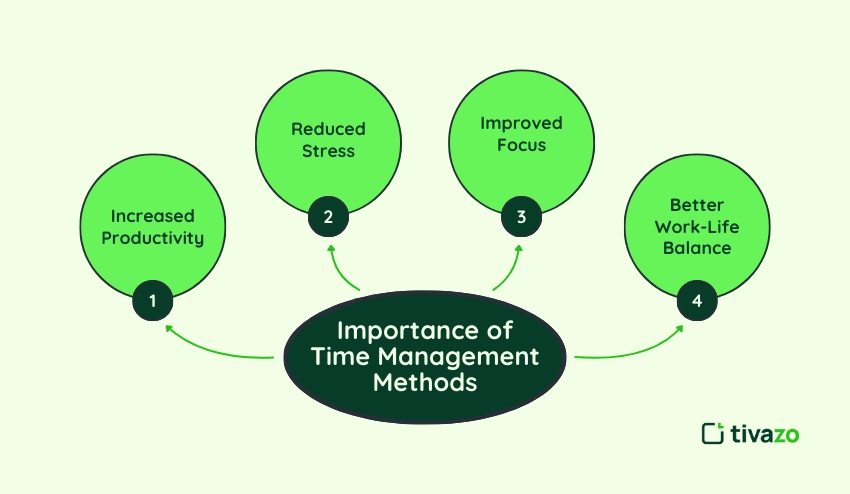
1. Increased Productivity
The adoption of effective time management methods enables people to plan their work and establish priorities. By prioritizing on the high-impact activities and reducing the time spent on low-value work, you will be able to accomplish more within a shorter time and can achieve measurable results.
In addition, organized systems such as time blocking or the Pomodoro Technique will allow dividing the work into small portions, which will not be overwhelming and will allow making steady progress on priorities. Based on research conducted on productivity, the above strategies can help to increase productivity by up to 25%.
2. Reduced Stress
Effective time management methods can eliminate last-minute rushes and missed deadlines, resulting in a more relaxed workplace. When planning is done in advance, it is easier to handle the responsibilities without being overwhelmed.
Other strategies, like scheduling, prioritization, and task batching, can enable people to plan work so that they can know when the workload is likely to peak and how to use their time. This alleviates stress, sharpens the mind, and makes one calmer in the way they handle their day-to-day duties.
3. Improved Focus
Time management methods will promote increased focus on important tasks since distraction and multitasking will be discouraged. This makes it so that the focus is on activities that are of utmost value.
Such tools as the Eisenhower Matrix can help understand the difference between urgent and important tasks and remain focused on what really matters. The ability to stay focused using systematic techniques makes it more accurate, minimizes errors, and increases the overall performance of the task.
4. Better Work-Life Balance
The efficient time management methods enable people to devote time to their professional and personal lives, which leads to a healthier lifestyle. The setup of free time and recreation ensures that individuals are able to rejuvenate without compromising on their productivity.
Avoiding burnout by managing work and personal life is an efficient way of maintaining long-term efficiency. Tools and techniques, such as daily planning or time blocking, can help to establish a proper schedule that will help to balance career and well-being.
Introduction of time management methods in everyday activities not only improves productivity but also improves the overall quality of life. These strategies will help individuals to work smarter, lower stress, and balance work and personal obligations in a healthy way.
You May Also Like: 6 Reasons Why Work-Life Balance Is Important
Time Management Methods for Students
Learners usually have to balance several courses, tasks, and extracurricular activities, and time management methods are essential to academic success. With structured strategies, students are more able to prioritize, meet deadlines, reduce stress, and increase the efficiency of learning.
1. Pomodoro Technique
The Pomodoro Technique is one of the most widespread time management methods among students. It is a method of working in concentrated periods of 25 minutes, with a short rest of 5 minutes. The strategy will assist in keeping focus and avoiding burnout when studying.
Studies indicate that it improves concentration and completion of tasks. Study periods should be split into smaller pieces so that students can remember the information better and not feel the exhaustion of a long study session.
2. Time Blocking
Another necessary time management methods among students is time blocking. It includes setting time limits on studying, homework, and even personal activities to make sure that each of them is carefully addressed.
This approach will not allow students to multitask and be overwhelmed by various responsibilities. Blocking time in digital calendars or planners to do subjects, assignments, and revision will help create a structured daily routine, which will improve overall efficiency and productivity.
3. Prioritization Techniques
Prioritizing is one of the most important time management methods that assists students in prioritizing the most critical or the most urgent tasks. Such tools as the Eisenhower Matrix allow students to distinguish between urgent, important, and less urgent tasks.
By prioritizing, we can guarantee that we never miss any important exams or deadlines and leave sufficient time to do other tasks that are not so important. Not only does this increase productivity, but it also decreases stress and increases academic performance.
With the application of time management methods on a regular basis, students will be able to manage their school, extracurricular, and personal life more efficiently, allowing them to get more out of less. A successful student routine is based on proper planning, prioritization, and focus.
Time Management Methods Examples
1. Eisenhower Matrix
The Eisenhower Matrix is one of the most popular time management methods that classifies activities according to their urgency and importance. Paying attention to the most important tasks and delegating or getting rid of less important tasks, you will be able to eliminate stress and make certain that your daily activities are goal-directed. This method aids individuals and teams in maximizing their working processes and remaining productive.
2. Time Blocking
One of the most important time management methods is time blocking, when certain time blocks are assigned to a task, meeting, or personal activity. This approach will enable them to focus when they are doing something, reduce multitasking, and make sure that all duties are covered. The use of digital calendars or planners will improve the efficiency of this strategy.
3. Pomodoro Technique
The Pomodoro Technique is a time management method that helps people to work in short bursts of 25 minutes followed by short breaks. The method enhances focus, eliminates burnout, and improves the level of productivity. It can be especially helpful to students, employees, and professionals with a heavy workload.
4. 80/20 Rule (Pareto Principle)
Pareto Principle (or the 80/20 rule) is a conceptual productivity tool that suggests that 20% percent of activities are responsible for 80 percent of the outcomes. Improving the focus and determination of the high-impact activities, you can accomplish more with less time and focus on high-value-added activities, both personal and professional.
5. Task Batching
Task batching is a time management methods of grouping similar tasks so that they can be done in a more efficient manner. This will reduce switching context, save mental resources, and increase focus. These examples can be responding to emails in one block or doing administrative work at a set time of the day.
6. Digital Tools
Time management tools, like Trello, Asana, or Tivazo, can be successfully used to enhance productivity because they help to follow the tasks, deadlines, and priorities. Such features can support methods such as task planning, time blocking, and process optimization of work, and help to make the process of staying organized and being effective in goal achievement.
Time Management Methods in the Workplace
1. Delegation
Delegation is an important time management methods at work that involves the delegation of tasks to the appropriate team members. Managers can delegate duties in such a way that they can concentrate on the top priority projects and still give staff a chance to offer relevant contributions. This method increases efficiency in workflow, minimizes bottlenecks, and increases the overall productivity of the team.
2. Setting SMART Goals
SMART goal setting (Specific, Measurable, Achievable, Relevant, and Time-bound) is a good time management methods among employees and managers. It gives a sense of direction, coordinates work with organizational goals, and makes it possible to measure progress. Employees are able to prioritise day-to-day actions which will directly lead to the achievement of these goals.
3. Regular Breaks
Taking breaks is another lesser-known but important time management method in the workplace. The short breaks between the tasks or meetings also prevent burnout, keep focus, and maintain high levels of productivity during the day. Short rests have also been found to enhance mental performance by 20 percent.

4. Prioritization of Tasks
Prioritization is one of the basic time management methods that helps employees concentrate on the things that are important. Digital planners such as the Eisenhower Matrix enable teams to prioritize tasks according to urgency and importance, which helps to avoid burnout and improve productivity. Appropriate prioritization also avoids time wastage in activities of low value.
5. Task Scheduling
Task scheduling is a solid time management tool that arranges work according to deadlines, the timeline of a project, and the availability of employees. Task management tools such as Trello, Asana, or Tivazo enable teams to schedule, monitor, and streamline their tasks. This will make operations smooth and projects completed on time.
6. Minimizing Distractions
One of the most important time management methods in the workplace is to reduce distractions. Employees can enhance focus by placing limits, disabling notifications, and creating a specific working environment. Distraction-free practice enables teams to perform the work faster and of better quality.
Time Management Methods for Employees
Structured time management processes are highly beneficial to any employee, and they help them maximize their day-to-day activities and improve productivity. Daily planning, prioritization of tasks, and time blocks are examples of methods that ensure that employees concentrate on activities with a high impact and reduce distractions. This can be achieved by strategically organizing work and putting down clear goals which employees can employ to make sure that deadlines are met in the most effective way, enhance performance, and also lessen the amount of stress in relation to work. Based on research, workers who take an active approach to time management have better job satisfaction and greater productivity gains that can be measured.
Besides planning and prioritizing, it is possible to utilize such time management tools as Trello, Asana, or Tivazo to allow employees to monitor their progress, deadlines, and stay organized. The use of techniques such as the Pomodoro Technique, task batching, and a reduction of interruptions contributes to the increased levels of concentration and enables employees to complete more tasks in shorter periods. The regularity with which these productivity measures are used not only increases productivity but also helps to maintain a healthier work-life balance that helps employees excel in their careers and in their personal lives.
Differences Between Time Management Strategies, Techniques, and Methods
| Aspect | Definition | Purpose | Example |
| Strategies | Broad plans or approaches to manage time effectively. | To set a long-term framework for productivity. | Prioritizing important tasks over urgent ones. |
| Techniques | Specific procedures or skills used within a strategy. | To implement strategies in practical, actionable ways. | The Pomodoro Technique or time-blocking. |
| Methods | Step-by-step systems or tools to manage time. | To provide a structured routine for consistent time management. | Eisenhower Matrix, GTD (Getting Things Done). |
Time Management Tools
Tivazo
Tivazo is an efficient time management software that can assist individuals and teams in monitoring their activities and productivity, as well as streamline their work processes. Offering the integration of task scheduling, time tracking, and reporting, Tivazo enables employees to employ useful time management practices and ensure that all priorities are kept in one place. This tool is best suited to increase productivity, minimize missed deadlines, and organize work schedules.
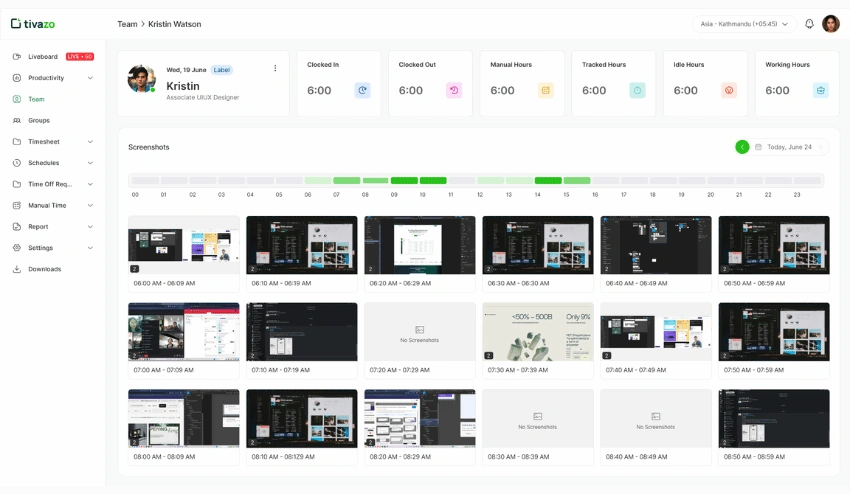
Trello
Trello is a flexible time management tool that allows organizing projects and tasks with visual boards and cards. It facilitates time management skills such as prioritizing tasks, time blocking, and project monitoring, thus helping individuals and teams to be more productive. Trello enables teamwork, and thus everyone is on the same page, and the work is executed effectively.
Asana
Asana is a widely used productivity and time management program that allows one to organize and plan their work, create deadlines, and monitor it. By adopting organized time management methods in Asana, workers will be able to manage their time, follow up on their work, and make sure that important projects are successfully completed within the set time. It also allows teamwork and reporting of progress.
Conclusion
The implementation of efficient time management methods can make a considerable difference to productivity and the drop in stress levels. The Pomodoro Technique, Eisenhower Matrix, and time blocking are strategies that can help a person accomplish more in their day-to-day lives. The most important thing in time management is consistency and flexibility. Are you willing to gain control over your time and increase your productivity?
